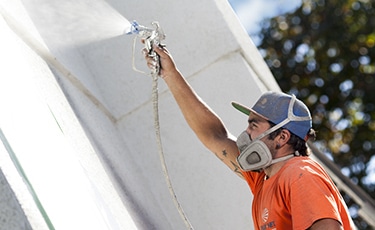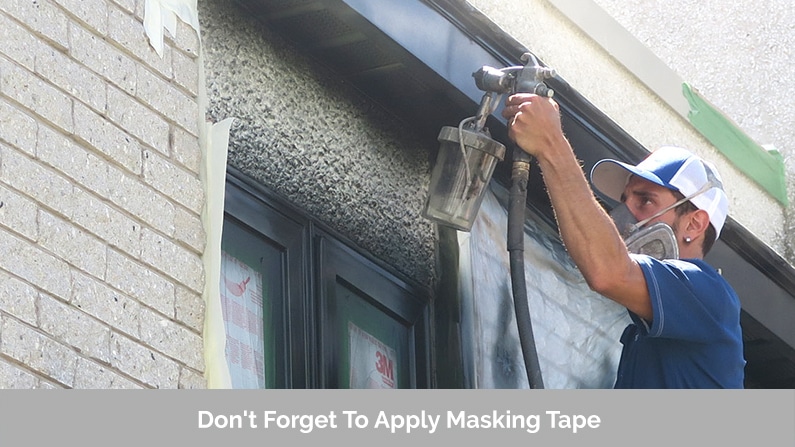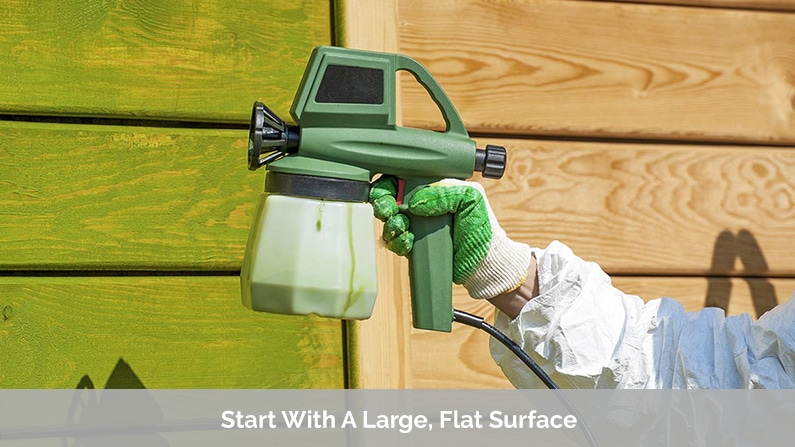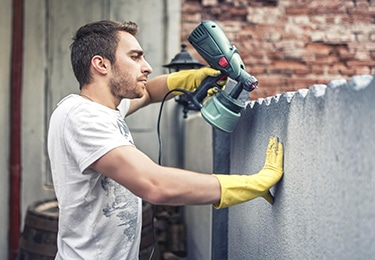We’ve taken a look at some of our favorite tricks and tips for spray painting exterior walls effectively.

The Advantage of Paint Sprayers on Exterior Surfaces
Other Pieces of Equipment You May Need
Our Tool Nerds staff thought about a few of the items they typically use while taking on a project like this. Here are some items you may need:
● Empty buckets for waste disposal and paint storage while reloading your paint sprayer
● Ladder with multiple height adjustments
● Masking tape to block off the sections of your house you don’t want painted
● A number of different spray tips for covering all areas of your home with ease (wide tips are great for large areas, while narrow tips can cover the details without making a mess)
● Stir sticks to properly mix up your paint
● Tarps and sheeting to protect your ground and the areas of your walls that you want to protect
● Spray shield to protect your face and arms
● Rags for cleanup
● Paint brushes and paint rollers for additional touch ups
● Safety glasses and gloves
Preparing to Paint

Wash Before You Spray
The Spray Painting Process

Always start with the top of the surface, and work your way down. Since paint tends to drip down, it makes sense to start up above.
Don’t miss out on spraying the undersides of your eaves – that’s always an invisible spot!
The direction of your spray depends on the construction of your walls. Do your walls have an obvious horizontal board pattern? If so, you’ll want to follow the grains as accurately as possible. Usually, you’ll want to follow along with the length of your exposed woodwork or trusses for the smoothest coat.
Work in Sections
Section off the parts of your exterior that you can easily reach. Leave the parts you can’t reach for the tip extensions or final touch-ups as soon as everything else is done and dried.

For a smoother paint, keep your tip 12 inches away from the surface at all times. That is a decent amount of room for your paint to spray out and cover all areas of the surface evenly.
Don’t Forget to Clean Up!
Slowly, you can begin to remove coverings from your bushes and tape from your walls. Move your outdoor furniture back to its proper location and replace your light fixtures if you removed them during the painting process.
Don’t forget to clean your paint sprayer as well! If left untreated, paint can become flaky inside the tubes of your equipment, rendering it useless for the next time you want to paint. Take good care of your equipment and it will take good care of you!










